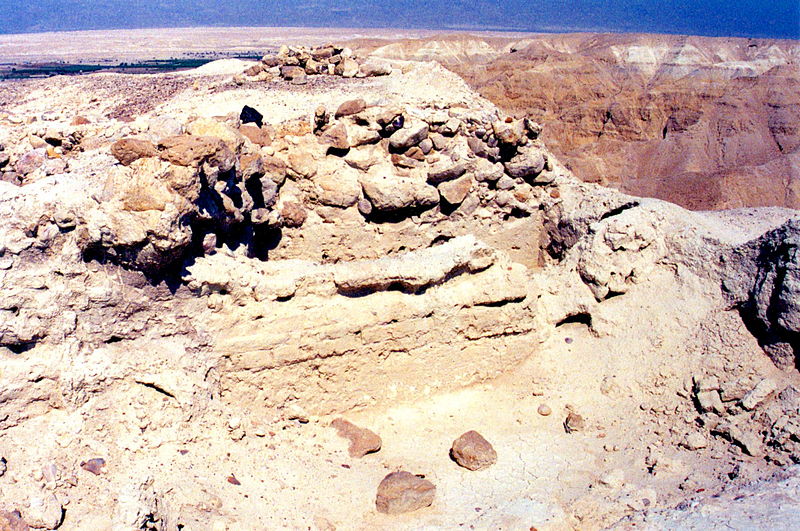
Archibald Sayce translated an Akkadian poem the “describes a rain of fire similar in character and effect to that which destroyed the cities of the plain.” He goes on to say that since Chedorlaomer and his allies were the ones who fought against Sodom and the other cities of the plain it should not be surprising that there is an Akkadian legend which reads similar to the story of Lot.1
The Overthrow of Sodom and Gomorrah1
1 An overthrow ‘ from the midst of the deep there came.
2 The fated punishment from the midst of heaven descended.
3 A storm like a plummet the earth (overwhelmed).
4 To the four winds the destroying flood like fire did burn.
5 The inhabitants of the citie(s) it had caused to be tormented; their bodies it consumed.
6 In city and country it spread death, and the flames as they rose overthrew.
7 Freeman and slave were equal, and the high places it filled.
8 In heaven and earth like a thunder-storm it had rained; a prey it made.
9 A place of refuge the gods hastened to, and in a throng collected.
10 Its mighty (onset) they fled from, and like a garment it concealed (mankind).
11 They (feared), and death (overtook them).
1 2 (Their) feet and hands (it embraced).
1 3 …
14 Their body it consumed.
15 … the city, its foundations it defiled.
16 … in breath, his mouth he filled.
17 As for this man, a loud voice was raised; the mighty lightning flash descended.
18 During the day it flashed; grievously (it fell).
….
However, Sayce later mentions that the story more closely resembles the doom of Sennacherib’s host.2
A darkness came from the middle of the deep,
The doom des(cended) from the midst of the heaven,
The sword (mowed down) the earth like grass;
Towards the four winds the flash (went) overthrowing like fire.
It sickened the men of the city, it tortured their bodies.
In city and land it caused lamentation; small and great (alike) it (smote).
Freeman and handmaid it bound; with wailing it filled (them).
In heaven and earth like a storm-cloud it rained; it made a prey.
To the place of supplication of their god they hastened and raised high the voice.
They received his mighty (aid) and like a garment it concealed (them).
They … him and the poison (was expelled?).
… (they embraced) his feet.
[The next line is completely destroyed],
… his body was tried.
(In lamentation) he smites his breast.2
Potential candidates for the cities of Sodom and Gomorrah are sites that were discovered in 1973 by Walter Rast and R. Thomas Schaub during their archaeological survey of the area southeast of the Dead Sea.3 The potential candidates include the well-known Bab edh-Dhra which Paul Lapp originally excavated from 1965-1967, with continued excavation by Rast and Schaub.4 Rast and Schaub discovered four additional cities – Numeria, Safi, Feifa, and Khanazir – which they suggested could be related to the Cities of the Plain mentioned in Bereishit. Exploration of Numeria verified its “close affinity with Bab edh-Dhra.” It has been suggested that Numeria is in fact Gomorrah and Bab edh-Dhra is Sodom.3
Another potential candidate for the city of Sodom is Tel el-Hammam located about 14 kilometers northeast of the Dead Sea in the southern Jordan River Valley. Surveys and excavations of Tel el-Hammam have “revealed a long occupational history.”5 According to the archaeologists excavating the site Tel el-Hammam remains a logical candidate for the city of Sodom. This candidacy is based on “a detailed analysis of the relevant biblical and historical materials regarding the chronology and location of the city.”6 Extensive research, archaeological data, and the exploration of Tel el-Hammam’s associated towns and villages are leading scholars to entertain the theory that Tel el-Hammam is in fact the Biblical city of Sodom described in Bereishit.6
———————————–
1Birch, Samuel. Records of the Past: Being English Translations of the Assyrian and Egyptian Monument, Volume XI Assyrian Texts. London: Samuel Bagster and Sons, 1878. [http://archive.org/details/recordsofpastbei11sociuoft]
2Sayce, A. Lectures on the Origin and Growth of Religion As Illustrated by the Religion of the Ancient Babylonians. London: Williams and Norgate, 1887. [http://www.scribd.com/doc/41863062/Lectures-on-the-origin-and-growth-of-religion-as-illustrated-by-the-religion-of-the-ancient-Babylonians-1887]
3Wood, Bryant. “The Discovery of the Sin Cities of Sodom and Gomorrah Part 1 of 2.” ankerberg.com. The John Ankerberg Show, n.d. [http://www.ankerberg.com/Articles/_PDFArchives/science/SC3W0903.pdf]
4Stephenson, Andrew. “Bab edh-Dhra.” unimelb.edu. The University of Melbourne, 2011. [http://vm.arts.unimelb.edu.au/report/babedhra.html]
5Trinity Southwest University. “Tall el-Hammam Excavation Project.” tallelhammam.com. Trinity Southwest University, n.d. [http://www.tallelhammam.com/]
6Collins, Steven & Hamdan, Khalil. “The Tall el-Hammam Excavation Project Season Activity Report – Season Five: 2010 Excavation, Exploration, and Survey.” tallelhamman.com. Trinity Southwest University, 2010. [http://www.tallelhammam.com/uploads/TeHEP_SEASON_FIVE_2010_REPORT.pdf]
